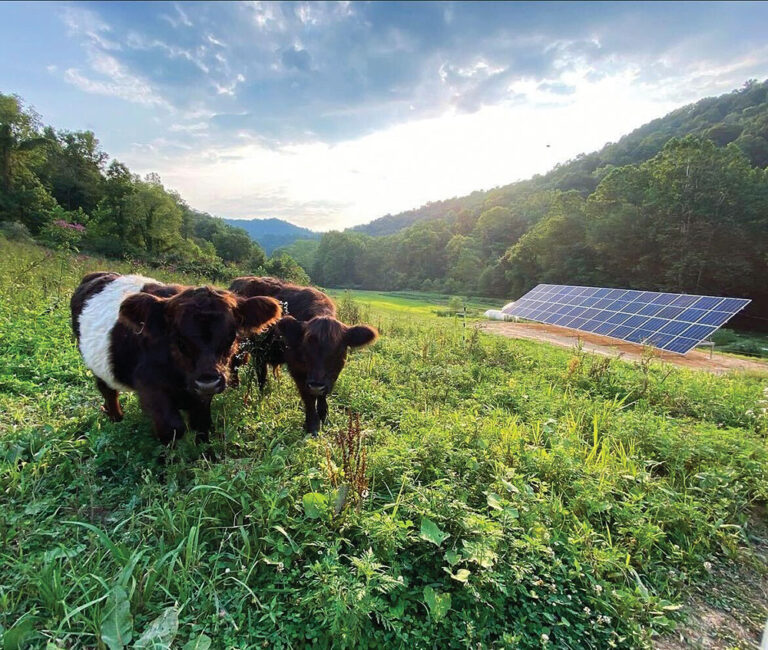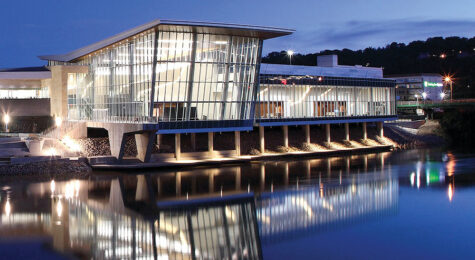Advantage Valley: Full Green Ahead
Private and public partners are working together to improve sustainability in West Virginia.

Banish those memories you might still retain from your sixth-grade report on the industries of West Virginia. Advantage Valley is at the forefront of the energy transition, and Coalfield Development is one of the organizations that is leading the way.
As a winner of the U.S. Department of Commerce’s Build Back Better Regional Challenge, selected along with only 21 others in the country, Coalfield Development was awarded a $62.8 million grant that will support its ACT Now coalition. The coalition was born in an effort to launch eight projects, many of which are related to improving sustainability in West Virginia.
Greening Up
“The ACT Now coalition will generate 5,000 new, direct, full-time jobs and 15,000 indirect jobs, create 125 new businesses, and leverage more than $250 million in private-sector investment in these green sectors in southern West Virginia and beyond,” says Ashley Stinnett, communications coordinator for Coalfield Development, the lead partner of the ACT Now coalition. “Coalfield Development will help guide, facilitate and support our coalition partners in this historic movement.”
The coalition’s projects include efforts to:
- Transform abandoned mines to sustainable lands.
- Prepare infrastructure for a new solar photovoltaic (PV) manufacturing plant in Huntington.
- Employ clean technology uses at the new Learning, Innovation, Food & Technology (LIFT) Center.
- Create a climate technology training center.
- Make room for sustainable economic development in Wayne County through a partnership with Solar Holler.
- Create green-collar jobs.
The Charleston Area Alliance and the City of Charleston, in partnership with the ACT Now coalition, will invest $13 million for the new LIFT development project in the Kanawha Manufacturing Company facility in downtown Charleston.
Among other anticipated projects, part of the LIFT Center will include the 10,000-square-foot Marshall Green Battery Institute that will focus on research and development for batteries in transportation, energy storage, and electric Vertical Takeoff and Landing (VTOL) aircraft sectors.
Another 10,000 square feet will be dedicated to the West Edge Factory, which plans to house the earn-and-learn registered apprentice and job training center. The next generation of solar roofers, battery techs, construction workers, healthy food production workers and other green sector workers will be trained in the facility.
Also located in the LIFT Center, the 17,000-square-foot Charleston Food Manufacturing Hub will include a shared kitchen rental space with wraparound entrepreneurial services, co-packing food production and aggregation, and cold storage. Docking space will be available to increase public access to healthy, local foods and to boost small business entrepreneurial food endeavors and resiliency in the region.
Powering Up
As Coalfield Development, West Virginia University and the Nature Conservancy work to identify the best mine locations for solar power plants, full-service solar development company Solar Holler is lending its technical expertise and analysis.
“Our primary role is in workforce development,” says Heather Ransom, director of marketing and storytelling at Solar Holler. “When we were a very young company, demand quickly outpaced the pool of qualified installers and electricians in the area, so we learned how to build training and apprenticeship programs out of necessity. It only makes sense for us to continue that work with ACT Now.”
The company is currently working with Wayne County High Schools on an apprenticeship program that brings seniors to work with its crews one day a week for hands-on training.
Communication and public engagement are key factors that will ensure ACT Now’s long-term success. “As with any historic economic revitalization transformation, our main priority is ensuring our Central Appalachian citizens understand the positive impact this will have for bettering the overall quality of life here,” Stinnett says. “It is critically important we go directly to the folks on the ground-level who will benefit the most from a better economic future.”
The team at Solar Holler has taken a similar approach.
“Any time you’re building an industry from scratch, you need a lot of people at the table, and you have to get them moving in the same direction,” Ransom says. “We’ve got nonprofits, private companies, academia, local governments, and a lot of movers and shakers working toward a common goal. And that’s what it’s going to take to have the impact we hope to see.”
Get to Know the Advantage Valley
Want to learn more about living and working in the Advantage Valley of West Virginia? Check out the latest edition of Livability Advantage Valley.



